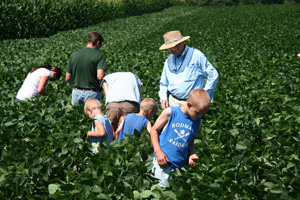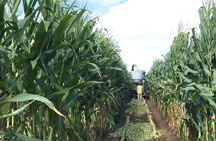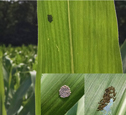
2022: Herbicide Programs for Glyphosate-Resistant Horseweed (Marestail) Control in Soybean
Disease
Northern Stem Canker: A New Challenge for New York Soybean Producers
Disease Surveys:
2019: Diagnosis and Assessment of Diseases of Field Crops in NNY
2018 2017 2016 2015 2014 2013
Food-Grade Soybean Production
Variety Trials: Small Grains & Food-Grade Soybeans, 2010 2008
NNY Forage and Food Soybeans, 2007
Producing Organic Food-Grade Soybeans in NNY, 2005
Organic Food-Grade Soybean Production Systems for NNY, 2004
Forage Soybean Breeding & Production: Variety Trials
2013 2012 2011 2009 2007 2004 2000 1999
Feed/Oil Grade Soybean Production
Soybean Variety Trials in NNY, 2011
Growing Soybeans in NNY
#1: Growing Soybeans in NNY
#2: Coping with Asian Soybean Rust
Plant Tissue Nutrient Levels in Soybean in NNY: Year 2
Weed Management
2022: Herbicide Programs for Glyphosate-Resistant Horseweed (Marestail) Control in Soybean
2019: One and Two-Pass Weed Control Programs for Glyphosate-Resistant Soybeans

 VARIETY TRIALS
VARIETY TRIALS